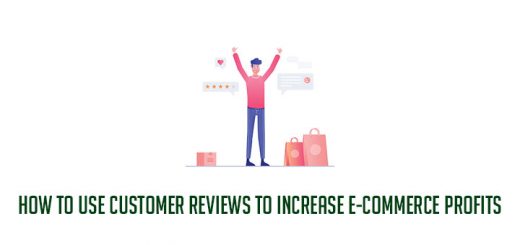10 Quick Wins to Boost eCommerce Sales
If you need more sales sooner rather than later to keep your business viable, there are a few eCommerce sales strategies that can provide quick, short-term results.
1. Change your shipping options
According to data from Statista, shipping issues play a role in two of the top reasons people give for shopping cart abandonment:
- 63% of people have abandoned a cart because the shipping cost too much
- 36% because the shipping time was too slow
Shipping speed and cost are a common impediment to purchase. Making the options more attractive for the coming days or weeks is a practical way to encourage more of your visitors that want to buy to take that final step.
Consider offering free shipping for a limited time. If you can’t afford to cover the full cost, think about other ways to make shipping feel like a better deal for customers:
- Provide free shipping for orders that meet a certain minimum (e.g. free shipping for all orders over $50)
- Provide a low flat rate for all ground shipping options
- Offer multiple shipping speed options, for those that value speed over cost
If you only plan to make the changes available temporarily, make that clear. People will be quicker to buy if they know they have a limited time to take advantage of the deal.
2. Offer a short-term discount
Discounts are an effective way to drive new eCommerce business to your store. Research from RetailMeNot found that two-thirds of all consumers have decided to make a purchase they wouldn’t have otherwise based on a discount offer. And 80% are more likely to buy from a new brand based on a compelling discount.
Discounts do mean a cut into your profits, but when you’re looking for a boost in sales, the increase in customers can make the smaller profit margins per sale worth it.
3. Increase your ad spending budget
Online advertising is a good way to reach more people fast. PPC (pay-per-click) platforms like Google Ads and social advertising channels can get information about your eCommerce store and products in front of people who have never heard of you before—a necessary first step before they can consider making a purchase. And they offer targeting options that increase the odds of reaching the potential customers who already want your products.
If you haven’t started advertising online, now’s a good time to launch your first campaigns. If you already have marketing campaigns going, increase your ad budget for the next few weeks. Check your analytics first and focus the extra spending on the campaigns that are driving the most conversions.
Higher ad budgets will mean more people see your ads, which leads to more visitors. And if your website does its job, more visitors will mean more customers.
4. Use retargeting
Have you ever clicked on the product page for something you liked, but stopped short of purchasing because you knew it wasn’t really a need, or you figured you should wait until after payday?
Retargeting is how you stay top of mind for the people who have shown an interest in your products and increase the likelihood they’ll come back and make a purchase.
You can set up retargeted ads to focus on the specific product a visitor looked at. And they’re also a good opportunity to feature any discounts or shipping deals you’re offering, as those could be the tipping factor for someone on the fence.
5. Update your product descriptions
How recent are your product descriptions? If it’s been a while since you’ve refreshed them, devote some time to it now.
To write product descriptions that appeal directly to what your audience cares about, look over your reviews and any feedback you’ve received from loyal customers. Pay attention to any specific features or benefits they mention and the language they use, and incorporate that into the descriptions you write.
While you’re working on this, also use the opportunity to make sure each product page is optimized for search engines. Figure out the best keyword to target for each page, and include it in the title tag, meta description, image file name, and image alt tag. And if you have any especially good customer reviews or testimonials for each product, put them right there on the page to show social proof.
6. Update your product photography
For physical products, the photography on your website is an important component in showing people what they’ll get. A high-quality photo that shows the product in the best possible light can go a long way to helping people make the decision to buy.
If your current product photos look great, you may be able to skip this step. But if you revisit them and it’s clear they can benefit from an update, then spend some time taking new photos to load to your site.
7. Look for upsell opportunities
Getting a customer to make a purchase is hard. Getting someone who’s already decided to be your customer to buy more is generally much easier.
Upsell offers are a useful way to increase eCommerce profits while doing less work. When a visitor starts the checkout process, you can set your eCommerce website up to suggest extra add-ons to their order before they complete the purchase.
The suggested items can be directly related to what they’re purchasing—for someone buying a litter box, you might suggest they add kitty litter as well. It can be an upgrade of the item itself, e.g. “Only $2 more to upgrade to a large”. Or it can be a reminder of how much to add to the cart to get free shipping. A compelling offer when they’re already on the path to purchase will often persuade customers to spend more.
8. Add relevant product recommendations to pages
Another way to increase order size is to show customers recommended products as they browse based on items similar to the page they’re on, or to other pages they’ve viewed.
You can invest in a recommendation engine or other eCommerce software that automates this process by collecting data on the buying habits of customers in order to provide increasingly accurate recommendations. If customers that buy your rose-scented soap product also tend to invest in a candle of the same scent, the engine will ensure future visitors who view one of those items will get a nudge to check out the other.
9. Add new case studies and testimonials to your site
Consumers trust other people like them more than they trust brands. Telling them why you think your products are awesome is part of the marketing game, but ultimately worth less than if you can make the case via your customers’ words.
Check with current customers to see if they’re willing to provide a testimonial or be the subject of a case study. You can identify the most enthusiastic customers by checking your reviews, or sending surveys to gather feedback. Once you’ve found some people who seem happy with your products, reach out to ask if they’re willing to share more about their experience and be featured on your site.
10. Make checkout easier
While shipping issues are often the main reason behind cart abandonment, sometimes any little thing that makes checkout more difficult can hinder sales.
If visitors have to create an account before they checkout, it can make the purchase feel like too much work, so offering a guest checkout option can be a quick way to increase sales. If they learn at the last moment that you don’t accept their preferred payment option, they may abandon the purchase, so offer as many payment options as you can.
Analyze your checkout process to identify anything that could make it slower or more difficult to complete now than it needs to be. Some simple tweaks to how checkout works can potentially make a big difference in how many visitors take a purchase through to the end.
Source: Hostgator’s Blog








